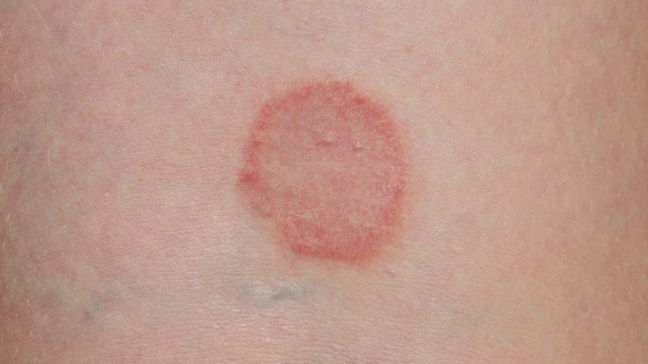
Ringworm is a fungal infection of the body skin, scalp, or nails. The disease occurs due to infection with dermatophytes, a type of fungal organisms that commonly populate the soil and are very widespread in nature. Also referred to as tinea, ringworm is very contagious and it can be acquired by anyone. The disease mostly occurs in children and in people that constantly interact with animals. The fungal elements responsible for causing ringworm can be contracted directly, by skin contact with contaminated people or animals, or indirectly, by entering in contact with contaminated objects. Ringworm is commonly acquired from cats or dogs, as these animals are often carriers of dermatophytes. Good personal hygiene is crucial in the prevention of ringworm and it is also advised not to use other people’s personal items. If you have a cat or a dog, pay regular visits to the vet’s in order to make sure that your pet isn’t infected with dermatophytes.
The first symptoms of ringworm of the scalp usually appear in about 10-14 days from contamination, while the symptoms of ringworm on other body regions may appear a little earlier. The disease is mainly diagnosed upon the patients’ reports of symptoms and upon close physical examination. Considering the fact that the symptoms of ringworm don’t always point to infection with dermatophytes, doctors usually take a sample of the patients’ affected skin for laboratory analysis. In the initial stages of the infection, the symptoms of ringworm are not intense and they may not be suggestive for contamination with fungal organisms. Therefore, the best means of diagnosing the disease is to carefully analyze skin samples taken from the patients’ affected regions of the body.
General symptoms of ringworm are: skin inflammation, rash, reddish aspect of the skin, small blisters on the skin, itching and soreness. The skin infection spreads in circular patches with prominent margins, giving the inflamed skin a ring-like aspect. The edges of the affected skin are usually more affected by the infection and they are sometimes covered with a crust. As the infection progresses towards other areas of the skin, the central regions of the inflamed patches begin to heal.
When the infection affects the scalp, the symptoms of ringworm are: small bumps, yellowish aspect of the affected areas on the scalp, exfoliation, temporary hair loss. If the fungal infection occurs in the regions of the feet, the symptoms of ringworm are: dry, cracked skin, scaling and thickening of the skin. When the disease affects the nails, the symptoms of ringworm are: nail deterioration, thickening, yellowish aspect of the nails. When the infection is localized on the face, the symptoms of ringworm are: red spots on the skin, swelling, inflammation and exfoliation.
It is best to timely discover the symptoms of ringworm, in order to prevent the spreading of the infection and the occurrence of complications. Also, if the disease is discovered and treated in time, the fungal infection will not be transmitted to other people. It is advised to see a dermatologist as soon as you have the first symptoms of ringworm.
Proudly WWW.PONIREVO.COM



